Spinning
In the times before industrial spinning mills, even before the first spinning wheels, wool and flax had to be spun with the drop spindle. Because the production of textile threads was an elemental part of the production of clothes, spinning can be seen as very important in the everyday life of the people.
Spindle whorls made of different material have often been found in female graves from Northern Europe. Therefore spinning is viewed as a typical female task. Girls have probably been taught how to spin very early in their life so that they could one day produce such thin and even threads as are documented through many textile finds from graves. Among the materials spindle whorls were made of are clay, bone/horn, (soap) stone and lead, occasionally amber and even glass. It is possible that wooden whorls were used as well - in fact, wooden spinning shafts with integrated spindle whorl have been found in York. But the evidence is very thin since wood is under-represented in the archaeological material.
Wool and spindle could be taken everywhere. Because of that, spinning was not only possible on the farm, but basically at every free moment. Through our own experience, we realized how much time has to be invested in order to spin just 100g of yarn. If one considers the required amount for a warm winter cloak, it becomes clear how important this part of textile production was. The value of a garment was significantly higher than what we are used to today. Because of that, people owned fewer garments and mended them more often. The "authentic" old everyday-tunic would hence be covered in patches.
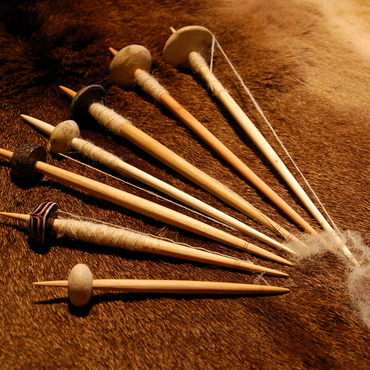
Levels of Textile Production
According to Eva Andersson Strand, four different levels of textile production can be distinguished.
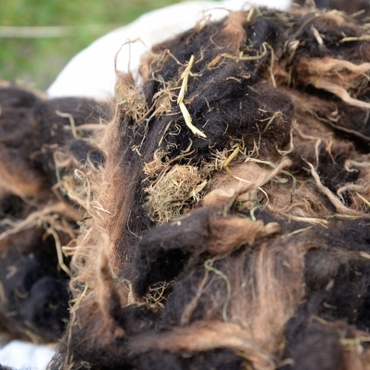
Raw Wool
The raw wool contains everything left in there when the sheep is shorn. Including insects, flora and things from the stable floor.
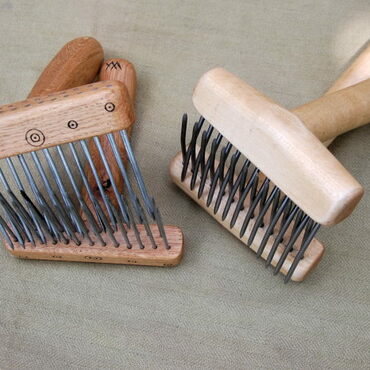
Combing
By combing, the wool is being prepared for spinning.
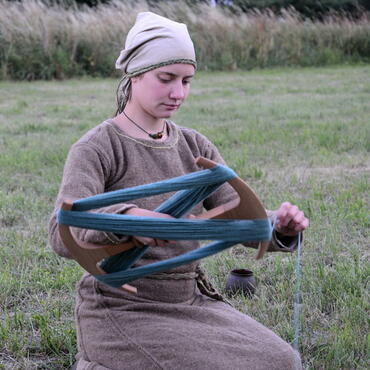
Using a niddy noddy
After spinning, the yarn might be wound onto a niddy noddy.
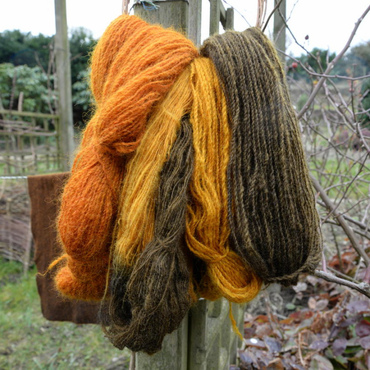
Dyeing
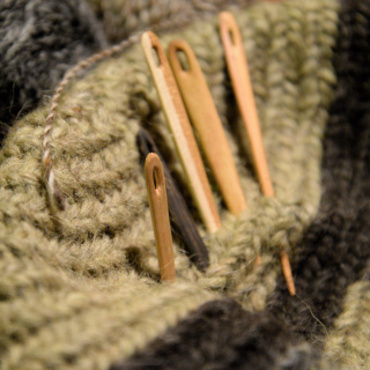
Nalbinding
Different garments can be produced with this old technique.
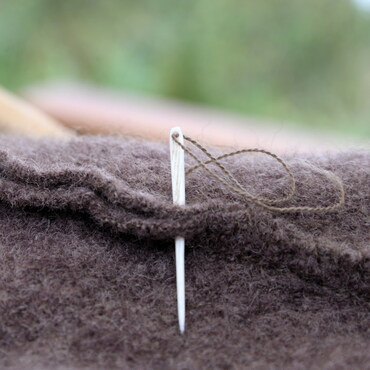
Sewing
Finally, pieces of cloth are sewn into garments.